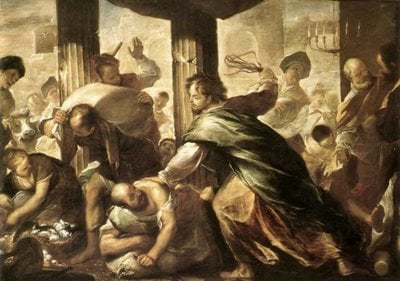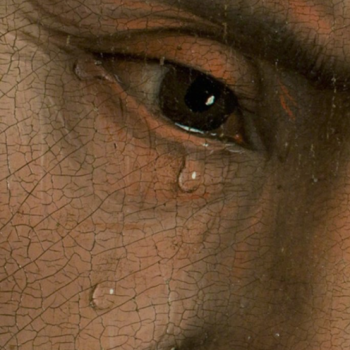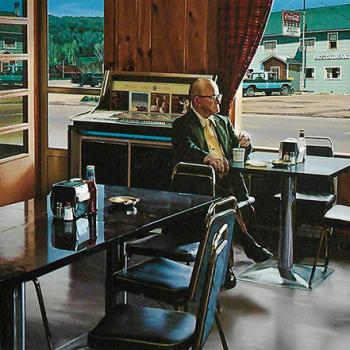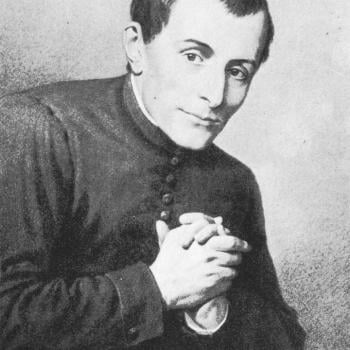Perhaps the first way we see Jesus unmasking is in the cleansing of the temple. In this passage, found in John chapter two, we see Jesus confronting the temple as an institution.
The Jewish festival פֶּסַח (Passover) is the occasion for Jesus’ visit to the temple in John chapter two. This is a festival that commemorates the freedom of the Israelites from their slavery under the Egyptians. The Egyptian government was essentially an institutionalized religion. The citizens all worshiped the Pharaoh as a god. The Israelites had been subjugated by this system and used as a means of generating wealth for the powerful in the theocracy. The Israelites are freed when Moses demonstrates his authority to the “god” Pharaoh through signs that culminate in the death of the “god” Pharaoh’s son. In Jesus’ own day many Israelites defined their identity as being worshipers of the One True God, with the temple as the center of worship. In John chapter two, Jesus’ cleansing is a confrontation of the institutionalized religion of his own day. Although he acknowledges he is in the temple of the one true God, he begins to attack those who are using the system to turn God’s people as a means of generating wealth for the powerful in the theocracy. Like Moses, Jesus is also asked to demonstrate his authority with signs. Jesus responds with an enigmatic illusion to his own death.
The Israelites are freed when Moses demonstrates his authority to the “god” Pharaoh through signs that culminate in the death of the “god” Pharaoh’s son. In Jesus’ own day many Israelites defined their identity as being worshipers of the One True God, with the temple as the center of worship. In John chapter two, Jesus’ cleansing is a confrontation of the institutionalized religion of his own day. Although he acknowledges he is in the temple of the one true God, he begins to attack those who are using the system to turn God’s people as a means of generating wealth for the powerful in the theocracy. Like Moses, Jesus is also asked to demonstrate his authority with signs. Jesus responds with an enigmatic illusion to his own death.
The Jewish festival פֶּסַח (Passover) is the occasion for Jesus’ visit to the temple in John chapter two. This is a festival that commemorates the freedom of the Israelites from their slavery under the Egyptians. The Egyptian government was essentially an institutionalized religion. The citizens all worshiped the Pharaoh as a god. The Israelites had been subjugated by this system and used as a means of generating wealth for the powerful in the theocracy.
 The Israelites are freed when Moses demonstrates his authority to the “god” Pharaoh through signs that culminate in the death of the “god” Pharaoh’s son. In Jesus’ own day many Israelites defined their identity as being worshipers of the One True God, with the temple as the center of worship. In John chapter two, Jesus’ cleansing is a confrontation of the institutionalized religion of his own day. Although he acknowledges he is in the temple of the one true God, he begins to attack those who are using the system to turn God’s people as a means of generating wealth for the powerful in the theocracy. Like Moses, Jesus is also asked to demonstrate his authority with signs. Jesus responds with an enigmatic illusion to his own death.
The Israelites are freed when Moses demonstrates his authority to the “god” Pharaoh through signs that culminate in the death of the “god” Pharaoh’s son. In Jesus’ own day many Israelites defined their identity as being worshipers of the One True God, with the temple as the center of worship. In John chapter two, Jesus’ cleansing is a confrontation of the institutionalized religion of his own day. Although he acknowledges he is in the temple of the one true God, he begins to attack those who are using the system to turn God’s people as a means of generating wealth for the powerful in the theocracy. Like Moses, Jesus is also asked to demonstrate his authority with signs. Jesus responds with an enigmatic illusion to his own death. Jesus confronts the selfishness of the system. The money changers respond with indignation, they see themselves as justified in their exploitation by virtue of their association. They want to continue to live in the dark. Jesus demonstrates that God is not impressed by being in the right club, but by living in the light. He calls them to honor God in his house and away from building their own kingdoms at the expense of his children, but in this case the Darkness does not understand it.













